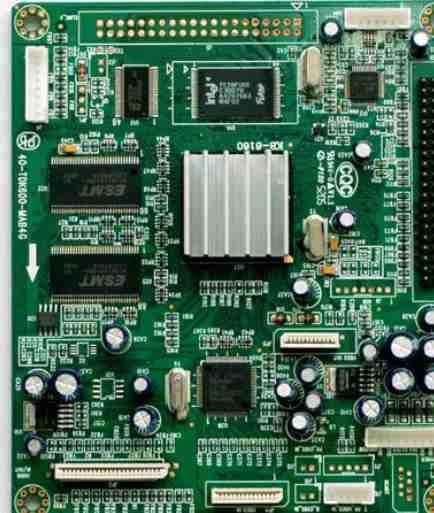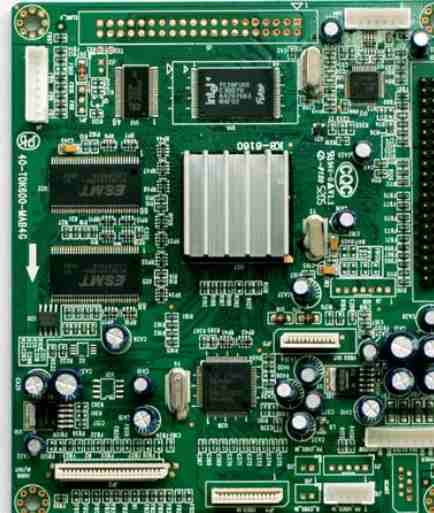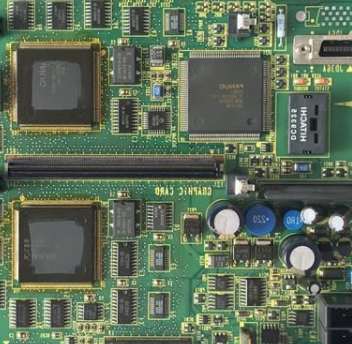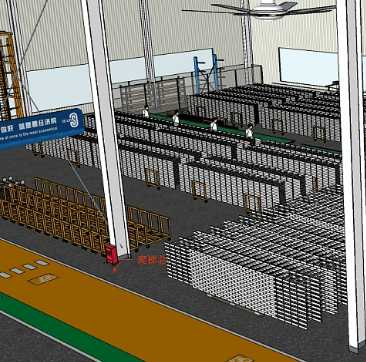
The problem of anti-interference is a very important link in modern PCB design, which directly reflects the performance and reliability of the whole system. For PCB design engineer, anti-interference design is the key and difficult point that we must master.
The presence of interference in PCB board
In the actual study, it is found that PCB design mainly has four aspects of interference: power supply noise, transmission line interference, coupling and electromagnetic interference (EMI).
1. Power supply noise
In the high frequency circuit, the noise of the power supply has an obvious influence on the high frequency signal. Therefore, the first requirement is that the power supply be low noise. Clean land is just as important here as clean power.
2. Transmission lines
In PCB, there are only two kinds of transmission lines: strip line and microwave line. The biggest problem of transmission line is reflection, which will cause many problems. For example, load signal will be superposition of original signal and echo signal, which will increase the difficulty of signal analysis. Reflection will cause return loss (return loss), and its effect on the signal is as serious as that of additive noise interference.
3. Coupling
The interference signal generated by the interference source can cause electromagnetic interference to the electronic control system through a certain coupling channel.
The coupling mode of interference is nothing more than through wire, space, common line, etc. acting on the electronic control system. The analysis mainly includes the following types: direct coupling, common impedance coupling, capacitance coupling, electromagnetic induction coupling, radiation coupling, etc.
4. Electromagnetic Interference (EMI)
Electromagnetic interference There are two types of EMI: conduction interference and radiation interference. Conducted interference refers to the coupling (interference) of signals from one electrical network to another electrical network through a conducting medium.
Radiation interference refers to the coupling (jamming) of the interference source to another electrical network through space.
In the design of high-speed PCB and system, high frequency signal lines, pins of integrated circuits, various connectors and so on May become radiation interference sources with antenna characteristics, which can emit electromagnetic waves and affect the normal work of other systems or other subsystems within the system.
PCB design anti-jamming measures
The anti-interference design of printed circuit board has a close relationship with the specific circuit, next, we only on the PCB anti-interference design of several common measures to do some explanation.
1. Power cable design
According to the size of the printed circuit board current, try to rent the width of the power line, reduce the loop resistance. At the same time, the direction of the power cord and ground wire is consistent with the direction of data transmission, which helps to enhance the anti-noise capability.
2. PCB design ground wire design principles
(1) digital and analog separation. If the circuit board contains both logical and linear circuits, keep them as separate as possible. Low frequency circuit should be as far as possible to use a single point of parallel grounding, the actual wiring difficulties can be partially connected after the parallel grounding. The high frequency circuit should be grounded in series at multiple points, the ground should be short and rented, and the high frequency element should be surrounded by a large area of grid foil as far as possible.
(2) The ground wire should be as thick as possible. If the grounding wire is very flexible line, the grounding potential changes with the change of current, so that the noise resistance performance is reduced. The ground wire should therefore be thickened so that it can pass through three times the allowable current on the printed board. If possible, the ground cable should be at least 2 mm to 3mm.

(3) The ground wire constitutes a closed-loop road. For printed boards composed only of digital circuits, the ground circuit is arranged into a group loop, which can improve the noise resistance.
3. Uncoupling capacitor configuration
One of the common practices of PCB design is to configure appropriate decommissioning capacitors in each key part of the printed board. The general configuration principle of decommissioning capacitance is:
(1) The power input terminal is connected to an electrolytic capacitor of 10 ~100uf. If possible, 100uF + is preferable.
(2) In principle, each IC chip should be arranged with a 0.01pF ceramic capacitor. If the gap of the printed board is not enough, a 1-10pf tantalum capacitor can be arranged every 4-8 chips.
(3) For devices with weak anti-noise ability and large power supply changes when the device is turned off, such as RAM and ROM memory devices, the de-coupling capacitor should be directly connected between the power line and the ground wire of the chip.
(4) The capacitor lead should not be too long, especially the high-frequency bypass capacitor should not have a lead.
4. Methods of eliminating electromagnetic interference in PCB design
(1) Reduce loops: Each loop is equivalent to an antenna, so we need to minimize the number of loops, the area of loops and the antenna effect of loops. Ensure that the signal has only one loop path at any two points, avoid artificial loops, and try to use the power layer.
(2) Filtering: Filtering can be adopted on the power line and signal line to reduce EMI. There are three methods: decoupling capacitor, EMI filter and magnetic element.
(3) Shielding.
(4) Try to reduce the speed of high-frequency devices.
(5) Increasing the dielectric constant of PCB board can prevent the high frequency parts such as the transmission line near the board from radiating outward; Increasing the thickness of PCB board and minimizing the thickness of microstrip line can prevent electromagnetic line spillover and also prevent radiation
Shenzhen kingford circuit board design capability
Maximum signal design rate: 10Gbps CML differential signal;
Maximum number of PCB design layers: 40;
Minimum line width: 2.4mil;
Minimum line spacing: 2.4mil;
Minimum BGA PIN spacing: 0.4mm;
Minimum mechanical hole diameter: 6mil;
Minimum laser drilling diameter: 4mil;
Maximum number of pins:; 63000 +
Maximum number of components: 3600;
Maximum number of BGA: 48+.
PCB design service process
1. The customer provides schematic diagram to consult PCB design;
2. Evaluate quotation according to schematic diagram and customer design requirements;
3. The customer confirms the quotation, signs the contract and pays the project deposit;
4. Received advance payment and arranged engineer design;
5. After the design is completed, provide the screenshot of the document to the customer for confirmation;
6. The customer confirmed OK, settled the balance, and provided PCB design materials









